Think you know everything there is to know about Montana? Did you know that it’s the only producer of palladium and platinum in the U.S.? Or that the longest river in America starts here in the state?
Montana is home to world-renowned national parks like Glacier National Park and Yellowstone National Park, where you can witness breathtaking landscapes and embrace the serenity of nature.
But that’s just the beginning! Prepare to be amazed by stunning lakes like Flathead Lake and enchanting scenic drives that will captivate your senses.
Montana is not just about its beauty; it also boasts a rich mining history, with silver deposits and ghost towns that tell tales of the state’s fascinating past. And let’s not forget about the incredible wildlife.
Whether you’re a nature enthusiast, a history buff, or simply curious about this majestic state, this article is tailored specifically for you.
Join me as we explore Montana facts that are sure to leave you in awe and with an insatiable wanderlust.
Montana Fun Facts
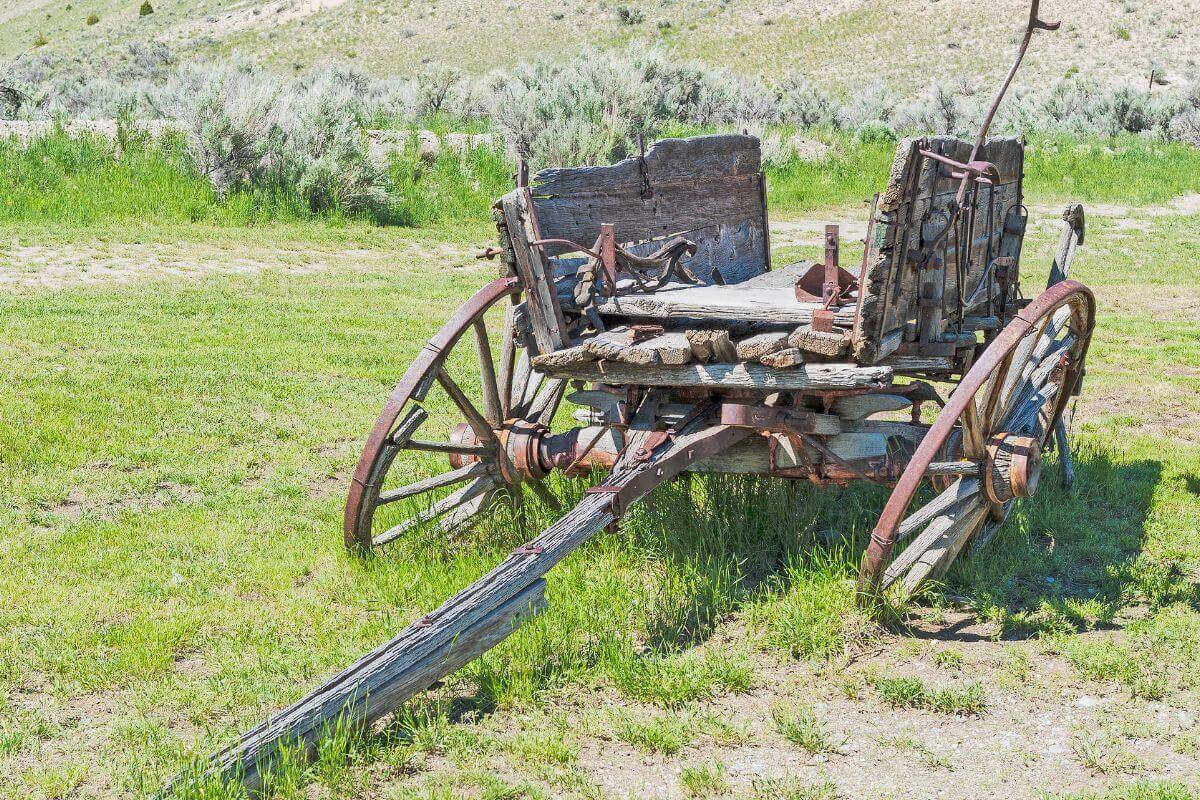
1. Montana’s Vast Skies Inspired “Big Sky Country”
Montana is often referred to as “Big Sky Country.” This nickname originated from Alfred Bertram Guthrie Jr.’s 1947 book “The Big Sky,” where he used this term to describe the state’s enormous skies.
2. A Hefty Bounty Lies Beneath The Treasure State
Montana is not just a treasure for its natural beauty, but also for its abundant natural resources. That’s why it’s called the “Treasure State.”
From precious metals like copper, silver, and gold, to gemstones such as sapphires, agate, and garnets, Montana is rich in minerals and gemstones.
3. An Iconic Mountain Range Runs Through Montana
Montana is blessed with the presence of the Continental Divide. This iconic mountain range forms the western border of Waterton Lakes National Park and runs through the state’s mountainous region.
4. Montana Population in a Nutshell: Few Residents in a Large State
According to the U.S. Census Bureau, Montana’s population estimates as of July 1, 2022, is 1,122,867, with an average population density of 7.09 people per square mile.
The largest population is found in Billings, making it the most populous municipality in the state.
5. A Montana Ghost Town Is Still on the Hunt for Tourists
The once-booming Gold Rush Town of Bannack is now transformed into a state park, preserving its rich history for visitors to explore.
Throughout the year, the town remains frozen in time, but during the 3rd weekend of July annually, it comes alive as individuals gather to portray Bannack’s Vigilantes and its villains.
6. Montana’s State Flag Has Been Altered Thrice!
Montana’s state flag has seen quite a few transformations. In fact, it has been altered thrice since its adoption.
Each change reflected the evolving identity and values of the state. The flag represents the state’s history of mining and farming as it features a pick, shovel, and plow.
7. Montana’s Motto History: “Oro y Plata” Was Not the First
Did you know that Montana’s motto, “Oro y Plata,” meaning “Gold and Silver,” had an interesting history? Initially, the motto suggestion was “Oro el Plata,” which is somewhat poor Spanish.
However, someone with better Spanish language skills spotted the mistake and corrected it to “Oro y Plata.”
8. Montana’s Many Faces: A Treasure Trove of Nicknames Revealing its Unique Charms
The “Treasure State” may be Montana’s most popular nickname, but there’s a whole medley of nicknames that capture different aspects of the state’s charm.
From “Big Sky Country” to “The Last Best Place,” “The Land of Shining Mountains” to “Stubbed-Toe State,” Montana’s nicknames reflect its diverse landscapes, rich history, and unique character.
9. Montana’s State Song: An Impromptu Masterpiece Born at a Butte Party and Enshrined in History
Montana’s state song, fittingly titled “Montana,” has an intriguing backstory. It was spontaneously composed in 1910 during a party at the home of Mrs. Creighton Largey in Butte, Montana.
Charles Cohan and musician Joseph E. Howard collaborated on the lyrics and music.
Governor Edwin L. Norris promptly declared it the state song following its successful performance in Helena, and it later became the official state song in 1945 under House Joint Resolution No. 5.
10. The Montana State Seal Was Revised 7 Times
Montana’s official seal features elements such as a plow, shovel, pick, mountains, sun, and the Great Falls of the Missouri River, along with the state motto “Oro y Plata.”
Interestingly, the seal had to go through 7 revisions before it became what it is today, embodying most of the elements that Francis Thompson sketched out in 1865.
11. A Medley of Songs Was Inspired by Montana
Montana is not only known for its natural beauty but also for its rich musical heritage. The official state lullaby, “Montana Lullaby,” was written by Ken Overcast and Wylie Gustafson.
Ken Overcast hails from Chinook, Montana, and the Montana lullaby gained support from a country radio DJ in Billings and a director from the Yellowstone County Museum.
12. 406 Day – A Montana Celebration Honoring the ‘Last Best Place’ With a Special Area Code
Montana is truly the “Last Best Place,” and its significance is celebrated on April 6th, known as 406 Day.
The number 406 corresponds to Montana’s sole area code, and this day is a commemoration of all the remarkable things that make Montana so special.
Montana Flora and Fauna Facts
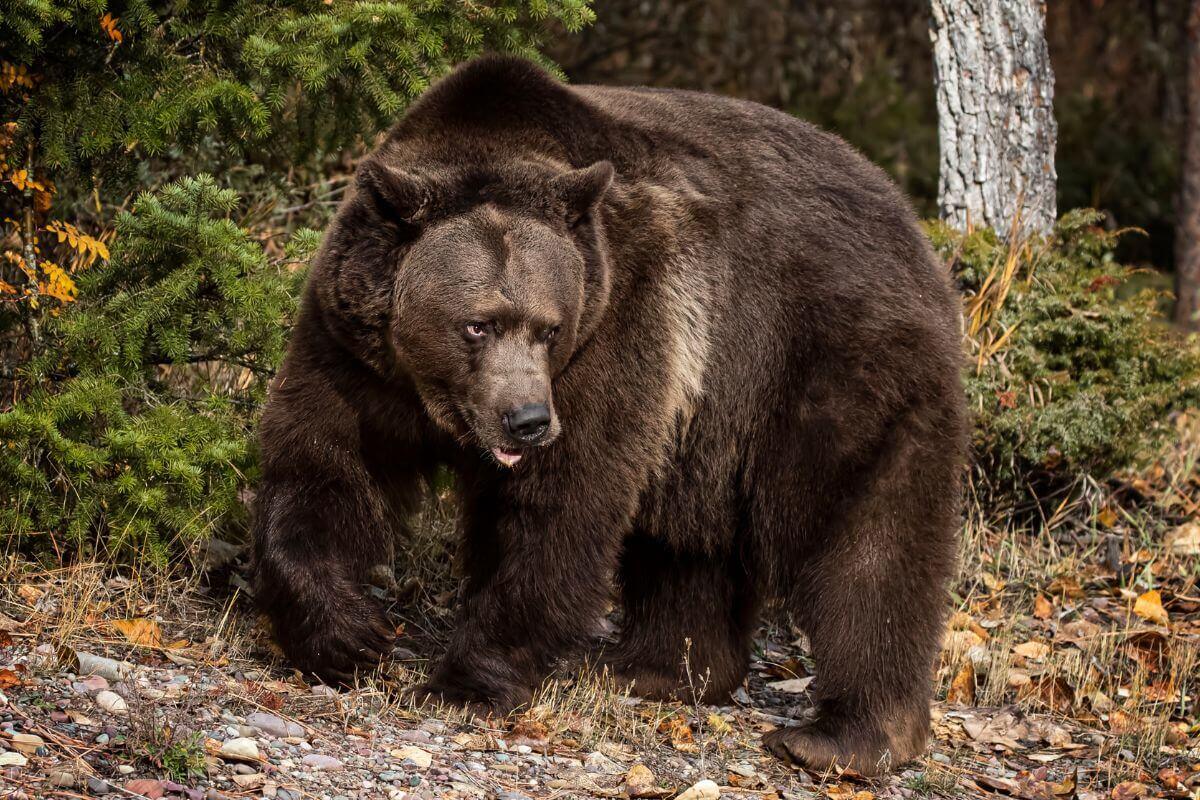
13. Montana’s Vital Role in Grizzly Bear Conservation: 4 Recovery Zones at the Heart of Preservation
Montana hosts 4 designated grizzly bear recovery zones as part of the Grizzly Bear Recovery Plan: the Northern Continental Divide, Greater Yellowstone, Cabinet-Yaak, and Bitterroot ecosystems.
These zones play a crucial role in the conservation efforts of this iconic species, ensuring their survival in their natural habitats. It’s inspiring to witness the efforts put forth to protect these incredible creatures.
14. The National Bison Range Produces 60 Calves a Year
This refuge, which was originally known as the National Bison Range, is home to a population of approximately 350 adult bison. Each year, around 50 to 60 new calves join this thriving community.
Designated as a National Wildlife Refuge in 1908, this range covers an impressive 18,524 acres (7,496 hectares) of the Montana valley and foothills, providing a safe haven for these magnificent creatures.
15. The “Resurrection Flower” Grows in Montana
Montana is home to a unique flower known as the “resurrection flower.” This extraordinary plant is aptly named for its ability to survive an entire year without water. Impressive, isn’t it?
The state takes pride in its state flower, the Bitterroot, symbolizing its connection to nature’s remarkable adaptability and strength.
16. Montana’s State Bird Has a Bright Yellow Belly
Let me introduce you to Montana’s official state bird, the Western Meadowlark. This beautiful bird is easily recognized by its bright yellow belly and melodious song.
Its presence adds a touch of vibrance to Montana’s green landscapes and reflects the state’s commitment to preserving its unique flora and fauna.
17. Montana’s Cattle Outnumber Its People
With approximately 2.16 million beef cattle, there are about 3 of these animals for every person residing in the state. It’s no wonder Montana ranks 6th in the U.S. in terms of the total count of beef cattle.
Montana’s expansive plains and rich grasslands provide the perfect conditions for these cattle to thrive, further amplifying the state’s reputation as a hub for agriculture and livestock.
18. Ponderosa Pines: Montana’s State Tree and Timeless Guardians of the Skyline
These magnificent trees are not only the state tree of Montana but also the guardians of its skyline. Ponderosa pines, with their distinct vanilla-like scent, thrive in warm and dry forests.
These long-lived trees can reach majestic heights and live for hundreds of years, adding to the timeless beauty of the state.
19. Montana’s Mourning Cloak Butterflies: Harbingers of Spring
The mourning cloak butterfly, scientifically known as Nymphalis antiopa, often emerges before the winter snow has fully melted.
These dark-winged butterflies can be found resting on tree trunks, basking in the sun’s warmth to prepare for flight. Montana’s unique climate and diverse habitats make it an ideal destination for these creatures.
20. The Quest for Montana’s State Fish
The pursuit began on the “Today in Montana” show when Norma Ashby and her husband, Shirley, of Great Falls discussed state symbols and proposed launching a statewide campaign for a state fish.
The Earl Clack Museum in Havre noted that this fish would meet all criteria and boost Montana’s reputation as an angler’s paradise with pristine, clear waters.
21. The Grass Beneath Big Sky: Bluebunch Wheatgrass
Montana is proud to have the bluebunch wheatgrass as its official state grass. It thrives in Montana’s diverse landscapes, grounding the state’s natural beauty and contributing to its unique ecosystem.
Senator David James, during the 43rd Legislature in 1973, recognized the importance of this native grass species and ensured its protection by introducing Senate Bill 41.
22. Montana’s Ancient Secrets: The State Fossil
Montana preserves living treasures and safeguards ancient secrets. This remarkable fossil, discovered in its vast landscapes, connects us to a prehistoric era and reveals the rich history beneath its soil.
With Governor Ted Schwinden’s designation on February 22, 1985, Montana’s state fossil, the dinosaur Maiasaura peeblesorum, was officially recognized.
23. Montana’s Sweet Huckleberry Triumph
Montana’s sweet triumph lies in its state fruit, the huckleberry. Last May 10, 2023, House Bill 880 was signed into law by Governor Greg Gianforte, solidifying the huckleberry’s position as Montana’s state fruit.
These delectable berries, with their distinct flavor and abundance in Montana’s forests, have become an emblem of the state’s natural abundance and local pride.
Montana Destinations: Interesting Truths
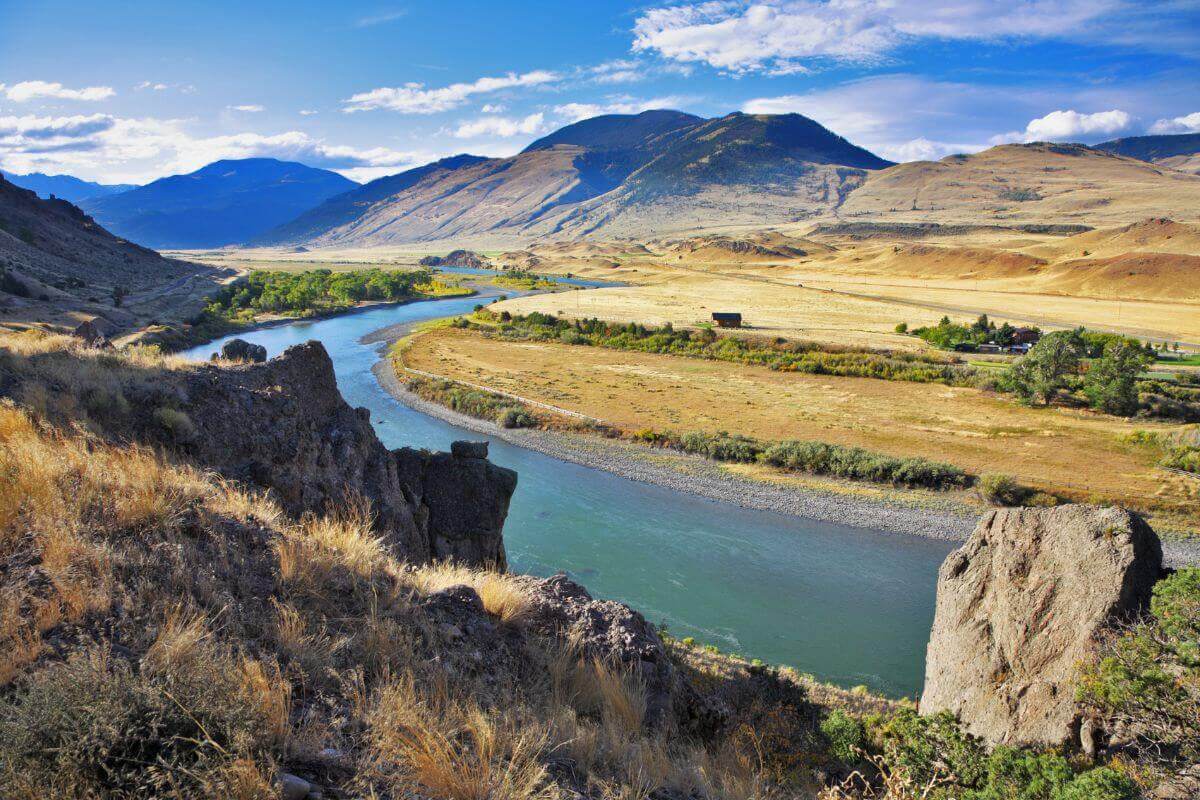
24. Montana’s Highest Point Is in Granite Peak
Montana truly reaches new heights with its towering peak, Granite Peak. Sitting at an elevation of 12,807 feet (3,904 meters), it proudly claims the title of the highest natural peak in the entire state.
It doesn’t stop there—Granite Peak also holds its own on a national level, ranking as the 10th highest point in the United States.
25. Montana Shares Yellowstone National Park With Two Other States
While Wyoming boasts the lion’s share of this majestic park, with more than 95% of its vast expanse within its borders, Idaho and Montana also get a taste of Yellowstone’s grandeur.
- Read more about the Montana vs Idaho Overview
Approximately 3% of the park is tucked away in Montana, giving visitors a chance to experience the park’s wonders from their unique perspective.
26. Hiking Isn’t the Only Thing That You Can Do at Glacier National Park
With a whopping 734 miles of diverse trails, it’s a paradise for outdoor enthusiasts and adventurers. But the fun doesn’t stop there.
Here Are 5 Exciting Activities Beyond Hiking at Glacier National Park:
- Backcountry Camping – Step into the heart of nature and immerse yourself in the park’s stunning wilderness with backcountry camping. It’s a unique way to experience the park’s beauty up close.
- Ranger-Led Programs – Gain a wealth of knowledge about the park’s history, wildlife, and ecosystems through ranger-led programs. These educational experiences add depth to your visit.
- Guided Tours – Make every step unforgettable with guided tours. Whether it’s a boat tour or a wildlife excursion, expert guides will enhance your appreciation of the park’s wonders.
- Going-to-the-Sun Road – Take a scenic drive like no other on the iconic Going-to-the-Sun Road. Marvel at breathtaking vistas as you traverse through Glacier National Park’s stunning landscapes.
- Biking and Photography – Explore the park on 2 wheels and capture its natural beauty through photography. Enthusiasts will find endless opportunities to indulge their passions.
27. Montana Is Home to the Largest County Park in the United States
Located south of Havre, Montana, Hill County Beaver Creek Park covers over 10,000 acres of natural beauty and frames 17 miles of Secondary Highway 234, also known as the Beaver Creek Highway.
Established in 1916, this park serves as a testament to Montana’s commitment to preserving its vast and diverse landscapes.
28. The Longest River in North America Starts in Montana
Flowing through the heart of Montana is the mighty Missouri River, the longest river in North America. As it meanders through the state, it showcases the enduring beauty of Montana’s landscapes.
Originating in the Rocky Mountains of Montana, this gorgeous river spans an impressive 2,340 miles before meeting the Mississippi River in St. Louis.
29. The Waterton-Glacier International Peace Park Merges Two Parks
Montana is home to a unique international park known as the Waterton-Glacier International Peace Park.
This extraordinary park encompasses a portion of Waterton Lakes National Park in Canada and a section of Glacier National Park in Montana.
30. The Largest Natural Freshwater Lake in the Western U.S. Is in Montana
Montana proudly boasts the largest natural body of freshwater in the western United States—Flathead Lake. This lake covers an impressive 191 square miles and features 160 miles of pristine shoreline.
Offering unparalleled beauty and recreational opportunities, Flathead Lake draws visitors from far and wide. Crystal-clear waters and the State Park create a haven for water enthusiasts and nature lovers.
31. Ironically, the Shortest River in the U.S. Is Also in Montana
Montana is full of surprises, including the Roe River, which holds the title for the shortest recorded river in the entire United States.
Flowing a mere 201 feet (61 meters) in Cascade County, this river meets the mighty Missouri River. In a state known for its vast and majestic waterways, the Roe River stands out for its unique and petite size.
32. The Unique Duo: Montana Sapphire and Montana Moss Agate
Montana’s gemstone riches go beyond your imagination. The state is renowned for its prized sapphires, known for their rich blue hues that rival the Montana sky.
The state is also home to Montana moss agates, displaying captivating patterns resembling natural landscapes, attracting collectors and jewelry enthusiasts, showcasing the state’s geological marvels
33. Montana: Where the Mountains Beckon to Exhilarating Skiing
Montana boasts some of the largest ski resorts in the U.S. The wide-open slopes of destinations like Big Sky Resort and Whitefish Mountain Resort offer world-class skiing and snowboarding opportunities.
With breathtaking mountain vistas and extensive terrain, Montana’s ski resorts attract adventure seekers from around the globe.
34. Unearthing Dinosaurs at Makoshika State Park
Enter a prehistoric wonderland at Makoshika State Park, Montana’s largest state park, preserving the remnants of dinosaurs that once roamed the region.
Here, visitors can explore fossil-rich badlands, ancient rock formations, and unique geological features that provide a captivating glimpse into Montana’s distant past.
35. Montana’s 190-ft Deep Aquatic Wonder
Explore the captivating wonder of Earthquake Lake, a hauntingly beautiful lake formed during the devastating 1959 Hebgen Lake earthquake.
Located not far from Miles City, Montana, this deep lake is surrounded by submerged forests and exudes an eerie atmosphere. It serves as a reminder of the geological history and the raw power of nature.
36. Beartooth Highway: America’s Scenic Gateway
Beartooth Highway, often hailed as the “All-American Road” is a section of U.S. Route 212 between Red Lodge and the Northeast Entrance of Yellowstone National Park.
It offers a breathtaking journey through the Beartooth Mountains and leads travelers to the gateway of Yellowstone National Park.
37. Lolo Hot Springs: Birthplace of Luge in America
Lolo Hot Springs, a historical site that holds an intriguing claim to fame is located at the far west end of Montana’s U.S. Highway 12.
Lolo Hot Springs is where North America’s inaugural luge run was constructed in 1965. This hot springs destination offers both historical significance and soothing relaxation.
38. Berkeley Pit: A Toxic Waste Attraction in Montana
For a truly unique and unusual attraction, look no further than the Berkeley Pit in Butte, Montana. Once a bustling copper mine, the pit now serves as a stark reminder of the dangers of toxic waste.
While the water in the pit is dangerously unfit for swimming or drinking, visitors can pay a visit and witness the surreal sight of toxic waste up close.
Examination of deceased birds reveals the devastating effects of high arsenic and copper levels in the pit, leaving a lasting impression on those who visit.
Montana History: Fascinating Facts
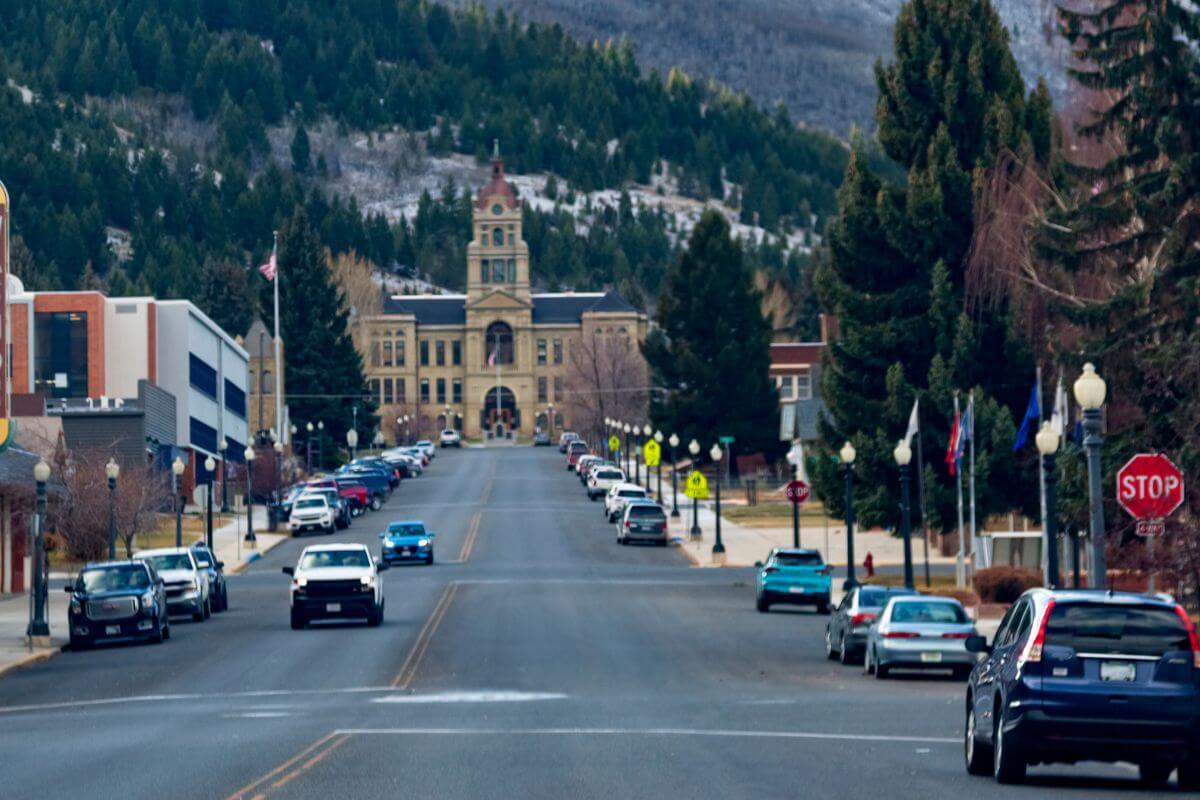
39. Anaconda Triumphed Over Helena in a State Capital Contest
In a lively contest in 1894, Helena emerged victorious over Anaconda to become Montana’s capital city.
This decision was a pivotal moment in the state’s history, shaping its development and political landscape.
40. Montana’s Pulitzer Prize-Winning Author
A. B. “Bud” Guthrie, Jr., achieved literary acclaim, winning the 1950 Pulitzer Prize for his novel, “The Way West.”
41. Mark Twain’s Montana Journey
In 1895, the famous author Mark Twain embarked on a tour of Montana, leaving an indelible mark on the state’s literary history.
42. Belle Winestine: Montana Suffragist and Activist
Belle Fligelman Winestine (1891-1985), born in Helena, was an American writer and activist who first joined the women’s suffrage movement during her time as a student at the University of Wisconsin.
She supported Jeannette Rankin’s congressional campaign. Her contribution to the women’s suffrage movement was just a part of her incredible and multifaceted career in journalism and activism.
43. St. Mary’s Mission: Montana’s 1st Permanent White Settlement
St. Mary’s Mission, near present-day Stevensville, was established in 1841 and marks one of Montana’s earliest white settlements. This mission is a tangible sign of Montana’s complex and evolving history.
44. Harold Urey: Montana’s Nobel Prize Recipient
Harold Clayton Urey (April 29, 1893 – January 5, 1981), an American scientist, received the Nobel Prize in Chemistry in 1934.
His work on deuterium, the heavy variant of hydrogen, not only added to Montana’s scientific legacy but also to the world’s understanding of chemistry.
45. The Triad of Montana’s Historic Capitals
Montana had 3 territorial capitals during its history: Bannack, Virginia City, and Helena reflecting the state’s evolution during its early years.
This historical tidbit provides a window into the state’s formative years and its journey to statehood.
46. Montana’s Influence on Hollywood: The Unabomber Connection
The movie “Stay Away Joe,” released in 1968, was loosely based on a novel by Great Falls author Dan Cushman. This film is just one example of the state’s diverse influence on the world of entertainment.
47. Shelby’s Boxing Showdown: Dempsey vs. Gibbons
On July 4, 1923, a historic boxing match between Jack Dempsey and Tommy Gibbons took place in Shelby, Montana, with the former emerging as the victor.
The state’s contribution to the boxing world is not to be underestimated.
48. Helena’s Earthquake Awakening
In October 1935, a series of extended earthquakes shook the Helena area and took 4 lives. This seismic event left a lasting impression on both the physical and emotional landscapes of the local community.
49. Butte Inspired Dashiell Hammett’s “Red Harvest” (1929)
The Anaconda Road massacre, a labor dispute in Butte in 1920, served as inspiration for Dashiell Hammett’s crime novel “Red Harvest.” in 1929 highlighting the city’s influence on literature.
50. A Temporary White House in Montana Was Established for President Teddy Roosevelt
A temporary White House was established in Montana during President Theodore Roosevelt’s term. This historical nugget offers a more intimate view of Montana’s connection to the highest office in the land.
His visit in 1902, symbolized the state’s historical connection to the highest office in the land. It was located in the town of Cinnabar.
51. Virginia City: Montana’s Pioneering Incorporated Haven
Virginia City achieved the distinction of becoming the state’s inaugural incorporated city on June 16, 1863, when a miner’s court, effectively serving as the town’s initial governing body, granted it this status.
52. A Montana Newspaper Editor Won a Pulitzer Prize
In 1965, a Montana newspaper editor, Mel Ruder received the Pulitzer Prize for “Local General or Spot News Reporting.” This award showcases the caliber of journalism that has thrived in the Big Sky State.
This award commends his courageous and resourceful reporting on a destructive flood that posed a threat to his community, recognizing his exceptional individual contribution to spot news reporting.
53. Cattle, Cowboys, and Hollywood: “Cattle Queen of Montana”
The 1954 Western movie “Cattle Queen of Montana” was filmed in the state, directed by Allan Dwan, and featuring Barbara Stanwyck and Ronald Reagan in the lead roles.
The supporting cast includes Gene Evans, Lance Fuller, Jack Elam, Chubby Johnson, and Morris Ankrum. Montana’s rugged landscapes have served as the quintessential backdrop for many a Hollywood classic.
54. The “Flathead Lake Monster” Dwells in This Montana Lake.
Flathead Lake is famous not only for its beauty but also for legends of a “Flathead Lake Monster” lovingly called Flossie. This whimsical tidbit adds to the charm and mystique of the region.
55. The Mystery of Thomas Francis Meagher
In 1867, just two years following the conclusion of the war, Meagher was aboard the steamboat G.A. Thompson, navigating the Missouri River en route to Fort Benton.
On the night of July 1, 1867, Thomas Francis Meagher fell into the Missouri River and is said to have drowned. His remains were never found, leaving a tantalizing mystery in the annals of Montana lore.
56. Montana State Fair: Celebrating Agriculture and Community
The Montana State Fair, held annually in Great Falls, offers a fun-filled celebration of agriculture, entertainment, and community spirit.
Attending this fair is an experience that taps into the heart of Montana’s culture.
57. The Confluence at Three Forks: Nature’s Masterpiece
The confluence of the Jefferson, Madison, and Gallatin Rivers near Three Forks is a geographical marvel that demands exploration. This landscape represents yet another facet of Montana’s beautiful scenery.
58. Isaac “Ike” Gravelle, Montana’s First Unabomber
Isaac “Ike” Gravelle, Montana’s original dynamiting extortionist, preceded the Unabomber by almost a century, using explosives and blackmail to target the Northern Pacific Railroad Company.
His criminal acts, including threats, explosions, and property damage, led to capture, conviction, and a fatal escape attempt driven solely by greed, adding a distinctive twist to the state’s criminal history.
59. Montana’s 7 Distinctive Indian Reservations
Montana is home to 7 Indian reservations including the Blackfeet, Rocky Boy’s, Fort Belknap, Fort Peck, Northern Cheyenne, Crow, and Flathead.
Each reservation has its unique cultural heritage and significance, contributing to the state’s diverse native population.
60. Alder Gulch: Montana’s Gold Rush Epicenter
Alder Gulch, where the town of Virginia City was established, was the site of the richest gold placer digging in Montana’s history, fueling the state’s early growth and prosperity.
61. Mike Mansfield: Montana’s Political Powerhouse
-Mike Mansfield, a Senate majority leader and ambassador, exemplified Montana’s influence on the national political stage leaving an enduring legacy of leadership and statesmanship.
62. Montana’s Borders: A Tapestry of Connections
Montana shares its borders with North Dakota, South Dakota, Wyoming, Idaho, and Canadian Provinces: British Columbia, Alberta, and Saskatchewan.
63. Helen Clarke: Montana’s Trailblazing Educator
Helen Piotopowaka Clarke made history around 140 years ago in Lewis and Clark County by becoming one of the first 2 women elected to public office in Montana, even before it became a state.
She served 3 terms as Lewis and Clark County School Superintendent, while another woman was elected to the same position in Meagher County in the same year.
64. Montana’s Rivers: Flowing to Three Oceans?
Glacier’s Triple Divide Peak at 8,020 ft (2,446 m) is a rare hydrologic feature.
From its summit, water flows to the Atlantic Ocean, the Pacific Ocean, and Hudson Bay in the Arctic Ocean, making it an extraordinary natural phenomenon.
65. Montana’s Role in Women’s Suffrage
In 1914, Montana granted women the right to vote, playing a significant role in the broader suffrage movement and advancing women’s rights in the United States.
66. Montana’s Size and Grandeur: The 4th Largest State
Montana ranks as the 4th largest state in the country, following Alaska, Texas, and California, showcasing its vastness and natural grandeur.
67. Montana’s Engineering Marvel: The Fort Peck Dam
The Fort Peck Dam, situated in northeastern Montana near Glasgow and close to the Fort Peck community, stands as the tallest among 6 significant dams along the Missouri River in the United States.
Stretching over a distance of 21,026 feet (6,409 meters) and towering at a height exceeding 250 feet (76 meters), it holds the distinction of being the largest hydraulically filled dam in the United States.
68. Lewis and Clark’s Montana Odyssey
The Lewis and Clark expedition exited Montana on September 13, 1805, at Lolo Pass and re-entered the state at the same pass on June 29, 1806, marking a significant chapter in their journey.
69. A Native Montanan’s World Series Grand Slam
Dave McNally, a native Montanan and car dealer, achieved a remarkable feat by hitting a grand-slam home run in the World Series in 1970, showcasing Montana’s talent on the national sports stage.
70. Yellowstone’s Montana Entrances: Gateways to Wonder
Montana offers multiple entrances to Yellowstone National Park, including West Yellowstone, Gardiner, and Cooke City, providing diverse access points to the wonders of this iconic national treasure.
71. America’s Coldest: Montana’s Record-Breaking Cold
On January 20, 1954, Montana recorded the lowest temperature in the continental U.S. at -70°F, a historical testament to the state’s extreme weather and climatic diversity.
72. Joseph K. Toole: Montana’s 1st Governor
Born on May 12, 1851, in Savannah, Missouri, Governor Joseph K. Toole, a Democrat from Helena, served as a territorial legislator and territorial delegate to the United States Congress.
In 1889, he became 1st Governor of Montana, guiding the state through its early statehood years, even amid evenly divided legislatures. His popularity led to 2 additional terms from 1901 to 1908.
73. The Birth of Lewis and Clark Caverns: Montana’s First State Park
The Lewis and Clark Caverns, Montana’s inaugural state park, preserves stunning underground wonders and natural beauty for all to explore.
74. Great Falls: The City of 5 Waterfalls
Great Falls, is known as the “Electric City” for its 5 waterfalls: Colter, Black Eagle, Ryan, Rainbow, and Crooked Falls. Each contributes to the region’s hydropower and water management.
75. Charlie Russell’s Montana Masterpiece
Montana’s Capitol features a mural masterpiece by renowned artist Charlie Russell, titled “Lewis and Clark Meeting Indians at Ross’ Hole,” commemorating a pivotal moment in the state’s history.
76. Montana’s Gold Output: A Staggering $144 Million
Montana has a rich mining history in gold mining, but it also boasts significant silver deposits.
Between 1862 and 1876, the state reached a total output of $144 million in gold during the state’s gold rush era, fueled in part by its abundant silver deposits.
77. The Enigmatic Beginnings of Academic Pursuits
The Montana Collegiate Institute, founded in Deer Lodge, represents the state’s 1st college and a significant part of Montana’s educational heritage, marking the beginnings of academic pursuits.
78. Artifacts Unveiled: Plains Indian Treasures
Established in 1941, the Museum of the Plains Indian showcases an extensive array of diverse art and cultural artifacts from various Northern Plains Tribal communities, such as:
- Blackfeet
- Crow
- Northern Cheyenne
- Sioux
- Assiniboine
- Arapaho
- Shoshone
- Nez Perce
- Flathead
- Chippewa
- Cree
Within its exhibits, visitors can explore a wide range of historical items, including traditional clothing, equestrian equipment, weaponry, household tools, infant carriers, and toys.
Montana Notable Figures
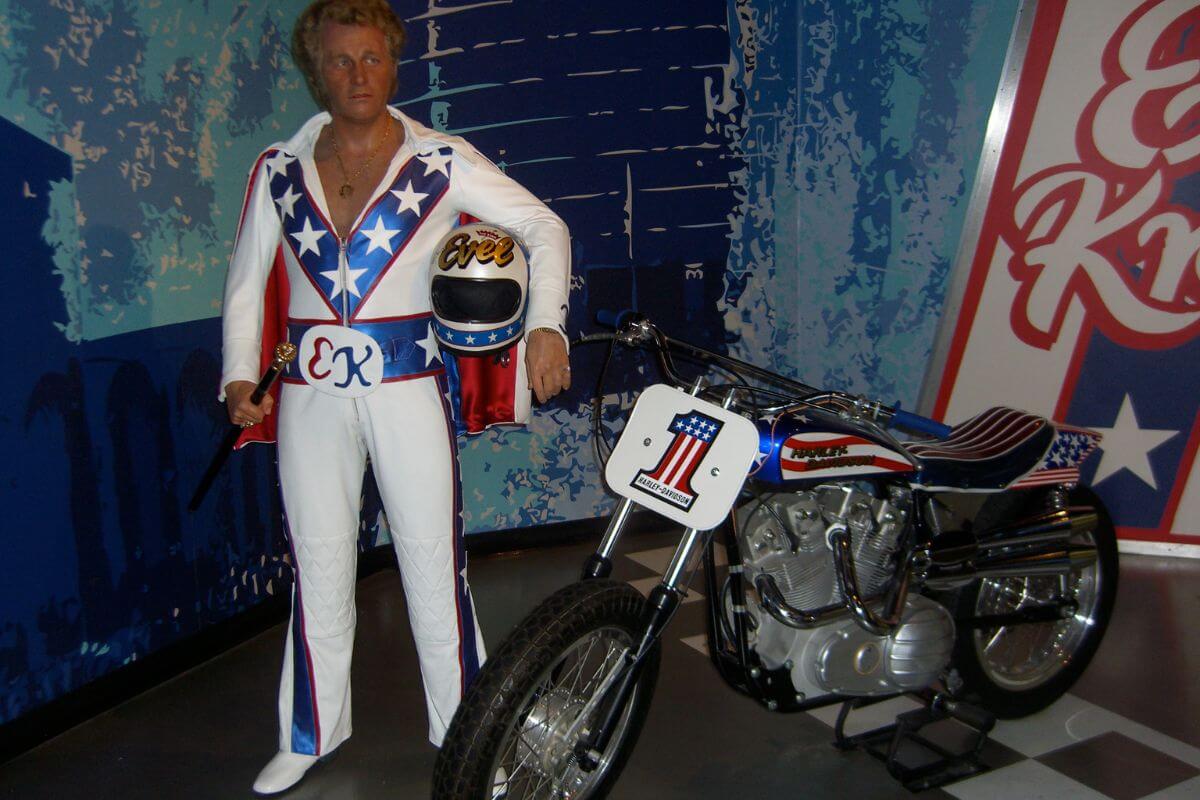
79. The Comic Alchemist of Saturday Night
Dana Carvey, a comedic genius hailing from one of Montana’s major cities, is best known for his unforgettable characters on “Saturday Night Live” and his role in the iconic film “Wayne’s World.”
His wit and talent have earned him a special place in the hearts of comedy lovers everywhere.
80. The “Zen Master” Hails From Deer Lodge
Another hometown hero is Phil Jackson, also known as the “Zen Master.” Born in Deer Lodge, Montana, Jackson achieved legendary status as a basketball coach in the NBA.
His coaching success and unique approach to the game have made him a revered figure in the sports world.
81. Evel Knievel: The Thrill-Seeker Extraordinaire
Evel Knievel, born in Butte, Montana, on October 17, 1938, gained fame for his daredevil motorcycle stunts and fearless nature. His thrilling feats captivated audiences around the globe.
82. The Voice of Sports From Billings
Billings native Brent Musburger made a name for himself as a prominent sportscaster, particularly for his role as an original member of “NFL Today.”
His passionate and engaging commentary enriched countless sports broadcasts and endeared him to fans everywhere.
83. A River’s Serenade: The Novel’s Montana Canvas
Norman Maclean’s novel “A River Runs Through It” beautifully captures Montana’s natural beauty and the art of fly fishing, showcasing the state’s deep connection to the outdoors.
84. Jeannette Rankin: Montana’s Trailblazing Woman
Jeannette Rankin, a pioneering suffragette, trailblazed her way to becoming Montana’s first woman elected to the U.S. House of Representatives.
Her groundbreaking achievements continue to inspire women and shape the history of Montana.
85. Montana Houses a Hollywood Legend in Helena
Gary Cooper, a Hollywood legend born in Helena, Montana. He achieved the distinction of winning the Academy Award for Best Actor on 2 occasions and received 3 additional nominations.
In 1961, he was honored with an Academy Honorary Award in recognition of his outstanding career accomplishments.
86. Montana’s Silver Screen Luminary
Myrna Loy was born in Helena, Montana in 1905. She starred in more than 120 films and is best known for her role as Nora Charles in “The Thin Man” film series, earning her the title of “The Queen of Hollywood.”
87. Montana Has Its Own Broadcast Journalism Star
Chet Huntley, a broadcast journalism star from Montana, gained recognition for his work, particularly as one of the hosts of “The Huntley-Brinkley Report.”
88. The Montana Rancher of Modern Family
Jesse Tyler Ferguson, an accomplished actor, not only owns a picturesque ranch in Montana but also actively supports local charitable initiatives.
His love for the state is evident, and his contributions to both the arts and the community are truly commendable.
89. Montana’s Versatile Screen Enigma
Jeff Kober was born in Billings, Montana on December 18, 1953.
He is a versatile actor with Montana roots who has made significant contributions to film and television, with regular appearances in Sons of Anarchy and The Walking Dead.
90. Kalispell’s Oscar-Worthy Talent
Kalispell native Michelle Williams has received Academy Award nominations for her outstanding contributions to the film industry.
Her talent and dedication have firmly established her as one of Montana’s Oscar-worthy talents.
Montana Economy Facts
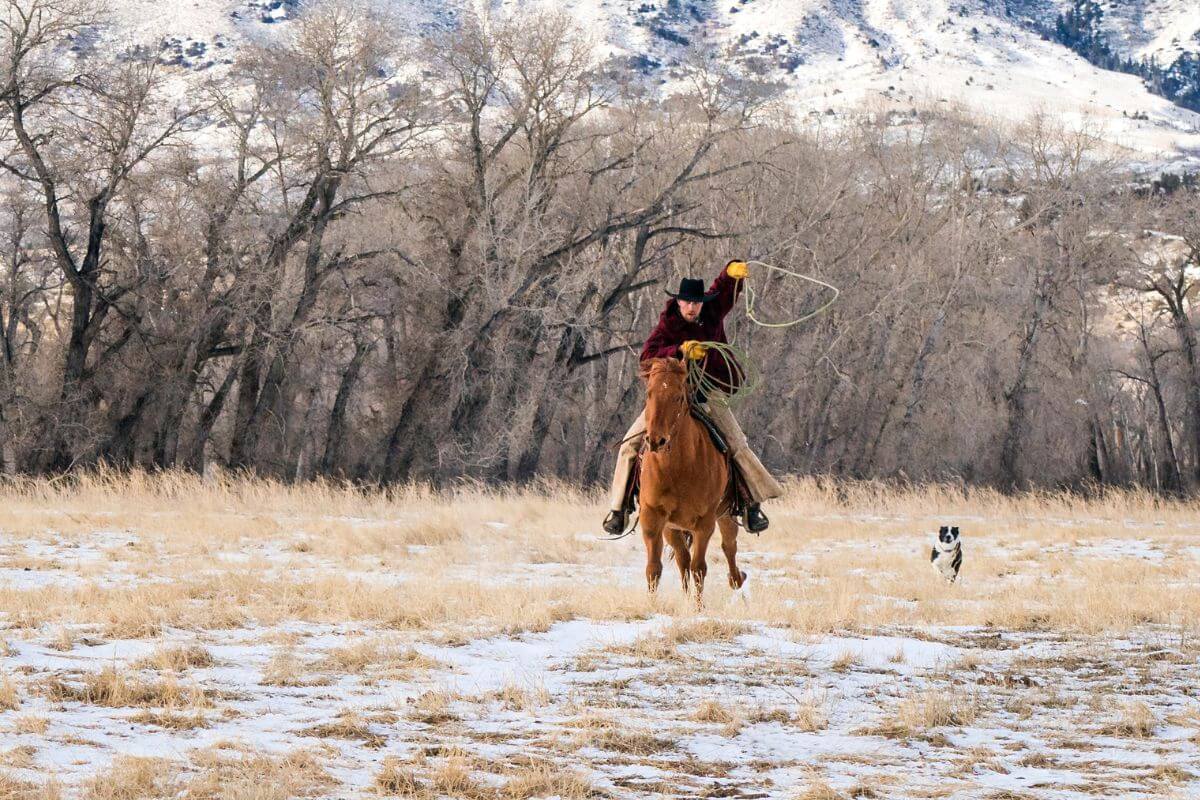
91. Sovereign Sectors: Montana’s Economic Titans
Government and Healthcare are the 2 largest industries for personal income in the state.
In total, Government makes up 19.3% of personal income compared to the National Average, with about 3 quarters of that coming from state and local government.
92. Saddles and Stars: Montana’s Cowboy Legacy
The cowboy culture holds a profound significance in Montana, reflecting the state’s rich history of cattle ranching on iconic properties like the Horseshoe Bar and the Antlers Ranch.
This enduring way of life embodies values of resilience, grit, and a deep connection to the land, preserving their heritage through poetry and stories that bridge the gap between the rugged outdoors and intellectual pursuits.
93. Red Sleep Mountain Drive: Bison’s Secret Realm
Red Sleep Mountain Drive is a 19-mile, one-way, gravel road that gains 2,000 feet.
It offers a captivating scenic loop within Montana’s National Bison Range, providing visitors with a unique opportunity to witness bison and pristine landscapes while enjoying one of the state’s scenic drives.
94. Crow Fair: Montana’s Indigenous Spectacle
Crow Fair, famously known as the “Tipi Capital of the World,” occurs annually during the 3rd weekend in August within the Crow Reservation in Montana.
It stands as one of the most significant Native American gatherings across North America and is orchestrated by a dedicated committee from the Crow tribe.
95. Montana on Film: The Wild West Canvas
Montana’s stunning landscapes have made it a sought-after location for Western films, contributing to the state’s connection to the film industry.
Famous films shot in Montana include A River Runs Through It (1992), known for its fly-fishing theme, and Legends of the Fall (1994), which features the state’s stunning landscapes as a backdrop.
96. Brewmasters’ Paradise: Montana’s Craft Beer Renaissance
Montana’s craft brewing industry more than doubled its workforce over the past 4 years, according to a study published by the University of Montana’s Bureau of Business and Economic Research.
97. Big Sky’s Bard: Montana Shakespeare’s Journey
Located amid the expansive Big Sky region, Montana Shakespeare in the Parks is an outreach initiative affiliated with Montana State University.
It brings Shakespearean performances to 61 rural and underserved communities spanning over a 10-week period across 5 states.
98. Glacier’s Melting Chronicles: Climate’s Impact
The vanishing glaciers in Glacier National Park serve as a stark reminder of the impacts of climate change on Montana’s natural wonders.
The most notorious impact of climate change in the park is shrinking glaciers. For thousands of years, the glaciers naturally cycled through periods of advance and retreat.
99. Montana’s Precious Metals Source
Montana stands as the sole producer of palladium and platinum in the United States, highlighting its role in the nation’s resource production.
100. The State Leading in Talc Production
Montana leads the nation in talc production, contributing to various industries and products.
101. Montana’s Vast Acreage: A Bounty of Agriculture
Montana, with a population of around 1.1 million residents, boasts an extensive land area of 93 million acres, of which 58 million acres, equivalent to 62%, are dedicated to agricultural purposes.
Montana Fun Facts Final Thoughts
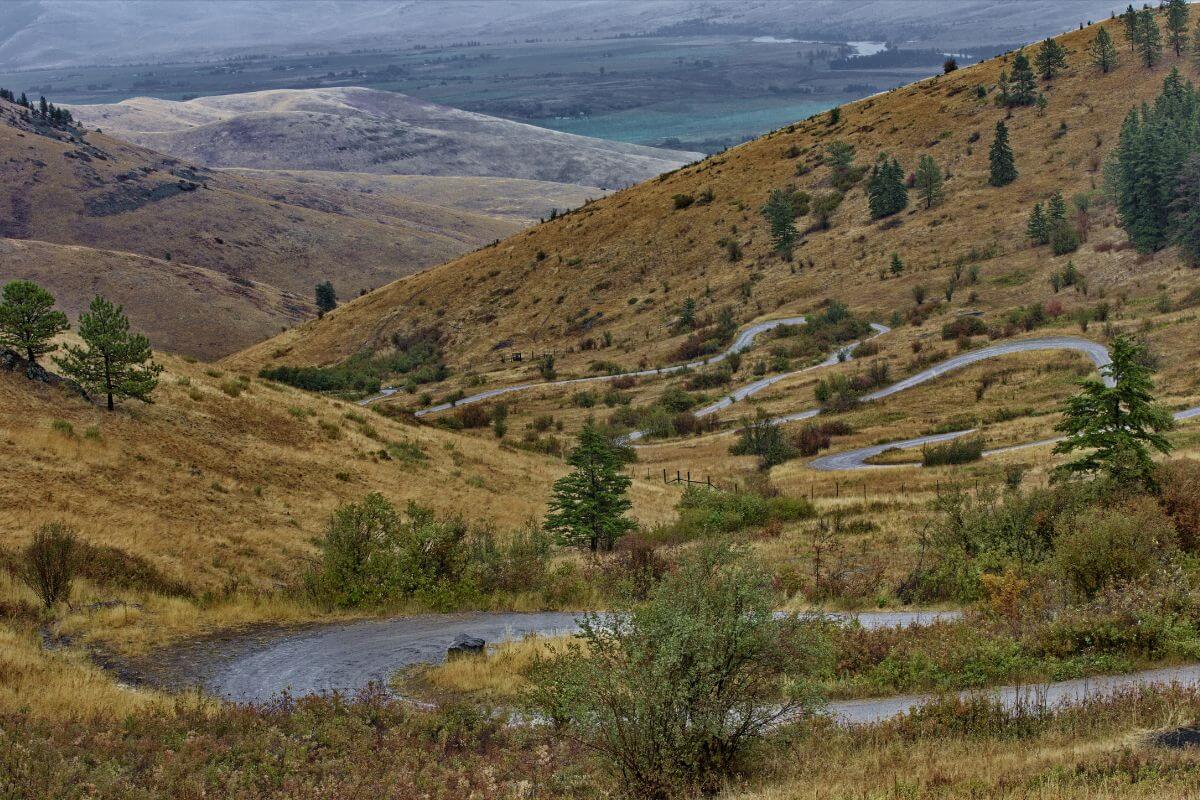
From the vibrant indigenous culture that thrives in Montana to the awe-inspiring Red Sleep Mountain Drive, the state encapsulates a spirit that is as mesmerizing as its landscapes.
These fascinating facts and captivating information paint a vivid picture of the state’s rich tapestry, showcasing its diverse range of experiences and stories.
They bring to life the cowboys, the bison, the Native American traditions, and the cinematic allure that the land holds.
Montana not only boasts impressive landscapes but also holds a place in history. Its mining history can be seen in its abundance of silver deposits and the presence of ghost towns that tell stories of the past.
And let’s not forget that it stands as the sole producer of palladium and platinum in the United States, cementing its role in the nation’s resource production.
A plethora of fun facts and intriguing trivia further showcase the wealth of wonders that Montana possesses.
From Montana’s abundant natural resources to its Hollywood personalities, the state continues to captivate and amaze. Montana truly is a treasure trove of captivating information waiting to be uncovered.
If you want to learn more about Montana, keep your mind engaged with these articles:
- Best Montana Authors
- Essential Montana Info
- Contrasting Montana and Alaska
- Comparing Montana and Colorado
- https://fwp.mt.gov/conservation/wildlife-management/bear/management
- https://www.nps.gov/glac/learn/education/continental_divide.htm#
- https://www.umt.edu/this-is-montana/columns/stories/montana_regions_2of3.php#
- https://www.fs.usda.gov/detail/hlcnf/landmanagement/resourcemanagement/?cid=stelprdb5378437#
- https://fwp.mt.gov/stateparks/flathead-lake#
- https://scholarworks.umt.edu/cgi/viewcontent.cgi?article=2992&context=etd
- https://mhs.mt.gov/education/Students/exam/questions
- https://www.umt.edu/this-is-montana/columns/stories/virginia-city.php#
- https://www.nps.gov/glac/learn/education/continental_divide.htm#
- https://www.umt.edu/this-is-montana/columns/stories/montana-70below.php
- https://www.doi.gov/iacb/museum-plains-indian
- https://scholarworks.umt.edu/cgi/viewcontent.cgi?article=3912&context=etd#
- https://lmi.mt.gov/_docs/Publications/EAG-Articles/1219-MTsIndustries.pdf
- https://arc.lib.montana.edu/ivan-doig/objects/2602-B039-F11.pdf
- https://www.usgs.gov/centers/national-minerals-information-center/mineral-industry-montana
- https://www.montana.edu/extension/agimpact/reports/statewidereport.pdf
- https://www.flickr.com/photos/wadetregaskis/3413194671

